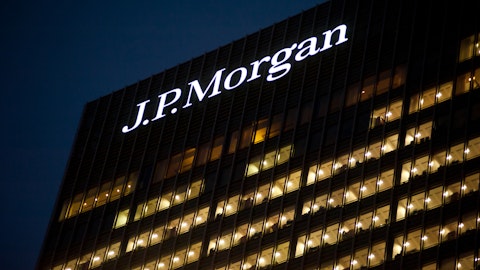Remember that this isn’t necessarily the same toxic CDOs that blew up the world economy in 2008, so there’s no need to start stockpiling canned food, bottled water, guns, and ammo in the bunker.
But derivatives, especially in the quantities owned by megabanks, can make it more challenging to determine a bank’s true assets in the event of a black swan, or completely unexpected financial event.
An example of this was the sudden and unexpected default of Russia on its loans in 1998 which brought down Long-Term Capital Management and required a bailout by the Federal Reserve to prevent a potential global finance crisis.
In other words, during times of financial panic, when derivative prices can go haywire, a large derivatives book can mean unexpected changes in asset prices, both up and down, that can substantially deviate from the bank’s balance sheet in normal times.
Essentially, big banks can be thought of as “black boxes,” in which investor capital goes in, profits come out, but you aren’t quite sure of what’s in there. This doesn’t necessarily mean that you shouldn’t invest in big banks; however, you need to be highly selective and make sure that you have confidence in management that the derivatives the bank does have won’t nuke the balance sheet when the world’s next inevitable financial crisis does occur.
The meltdown of 2008-2009 serves as a pretty good “worst case scenario.” The way that JPMorgan Chase and Wells Fargo not just survived but remained profitable and even helped the government bail out other major failed banks is a big reason why those two megabanks are priced at premiums to their book value.
Bank of America and Citigroup, which imploded due to excessively risky credit derivatives, trade at deep discounts to book value, because investors aren’t yet sure whether their current balance sheets are really as safe as they appear.
In other words, while all the megabanks have fortress balance sheets today, Wall Street isn’t sure that Bank of America’s and Citigroup’s fortress walls aren’t laced with dynamite that could explode the next time there’s a global financial surprise. This means that anyone investing in these two “fallen” megabanks needs to be especially aware of the potential risks and make sure to keep their positions small and only as part of a well-diversified portfolio.
A second major risk is that interest rates may not rise nearly as fast as the Federal Reserve currently expects, keeping net interest margins compressed. That’s because the US economic recovery has been extremely weak. In fact, it’s the weakest since 1949.
Now economists have argued for years over the cause of this. Various hypotheses have been offered, everything from: slow recoveries are normal after massive financial collapses, to a secular stagnation resulting from the aging of America’s population, to slower productivity that’s resulted from all the low hanging revolutionary innovations having already been plucked.
Regardless of the actual cause or causes, the fact is that the Federal Reserve has been lowering its long-term interest rate forecast for four years now, and the financial markets aren’t exactly confident in its current projections.
In fact, despite the Fed’s prediction that we’ll see three rate hikes by the end of 2017, right now financial markets are only pricing in a single 25 basis point increase through September of 2017, with the odds of a second at only 33.6% according to the CME Group.
That’s probably due to the weakening of US economic data over the past few months, which has resulted in both the Atlanta and New York Feds decreasing their forecasts for Q3 and Q4 US GDP growth.
In fact, the New York GDP Nowcast is at 2.2% growth in Q3 and 1.4% in Q4. That fourth quarter projection is for the same disappointing growth that the US recorded in the first half of 2016, and which has resulted in the Fed holding its fire when it comes to rising rates.
In other words, the long suffering megabanks, who are counting on rising rates to fatten their net interest margin spreads, might not get nearly the help that they are expecting or hoping for.
A third risk to keep in mind before investing in Citigroup, is that, due to its vast size and complexity, it is likely to take the longest to turnaround, assuming it can truly be turned around at all.
As you can see, Citigroup isn’t even close to the profitability of JPMorgan or Wells Fargo, and despite management’s confidence that it can achieve a long-term ROA of 2.25% (which would make Citigroup one of the most profitable banks on earth), in the most recent quarter there were several unexpected cost increases reported by the company. That means that future profitability for the bank may be far lower than management, shareholders, and Wall Street expects.
| Bank | Operating Margin | Net Margin | Return on Assets | Return on Equity |
| Citigroup | 30.1% | 19.3% | 0.8% | 6.7% |
| Bank of America | 25.5% | 16.3% | 0.5% | 6.5% |
| JPMorgan Chase | 33.3% | 23.4% | 0.9% | 9.9% |
| Wells Fargo | 37.8% | 23.8% | 1.2% | 12.1% |
| Industry Average | NA | 16.1% | 0.5% | 6.5% |
Source: Morningstar





